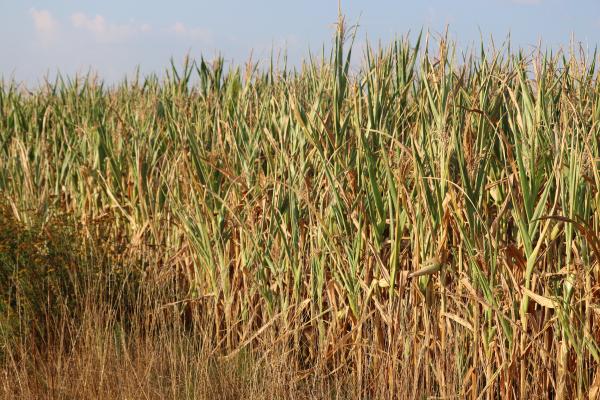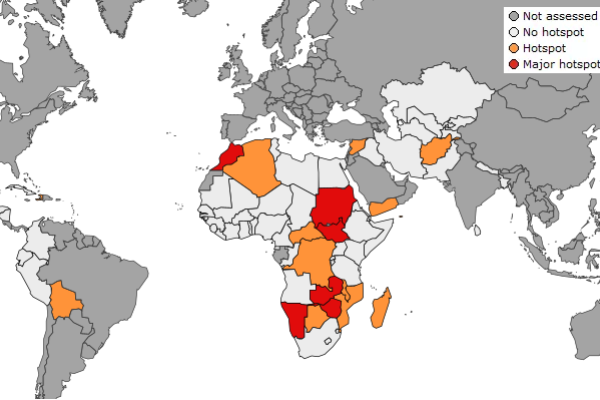
The Global Report on Food Crises (GFRC) 2023, in its mid-year update confirms the disheartening reality of the world's food crisis. As conflicts, economic shocks, and extreme weather events continue to wreak havoc alongside persisting vulnerabilities, millions of people continue to suffer from hunger and malnutrition.
The updated report provides the latest data on acute food insecurity for 2023, building on the May 2023 edition, which laid down the data for 2022. The new report covers the period from January to August 2023 and provides new updates on the state of acute food insecurity.
The mid-year update of the GRFC presents some stark statistics:
- Almost 238 million people across 48 food crisis countries faced high levels of acute food insecurity as of early August 2023, affecting nearly 1 in 5 individuals of the analysed population, a similar proportion as the one observed in 2022.
- The 10 worst food crisis countries in this report are the Democratic Republic of the Congo, Nigeria, Sudan, Ethiopia, Afghanistan, Yemen, Bangladesh, Pakistan, South Sudan and Somalia. Myanmar, the Syrian Arab Republic, and Ukraine, which were among the 10 hardest hit countries in 2022, have not been included in the mid-year update due to insufficient data on acute food insecurity in 2023.
- East Africa remains the worst-hit food crisis region, with nearly 65 million people facing high levels of acute food insecurity (an increase of 8 million people since 2022), primarily due to the ongoing conflict in Sudan, which has displaced 3.5 million people since April.
- Some countries have shown improvements in acute food insecurity conditions between 2022 and August 2023. Sri Lanka and Niger recorded the most substantial reductions, with 2.4 and 1.1 million people respectively experiencing improved conditions.
- In the 21 food crisis countries where data was available, approximately 27.2 million children under the age of five suffered from acute malnutrition by August 2023. Of these, 7.2 million were severely malnourished and in urgent need of treatment.
Drivers of acute food insecurity
The mid-year update report identifies three main types of shock that, when combined with a high proportion of vulnerable populations in food crisis countries, serve as the main drivers of acute food insecurity. These shocks are conflict / insecurity, economic related shocks and weather extremes.
- Conflict and insecurity: remains the leading driver of food insecurity, impacting eight out of the 10 worst-hit food crisis countries. Additionally, Russia’s decision to terminate the Black Sea Grain Initiative has raised uncertainty on global food market prices in the coming months. The recent coup d’état in the Niger is expected to reverse the recent food security improvements at country level and further exacerbate acute food insecurity in the wider region.
- Economic shocks: Despite lower global food prices in 2022, high food prices in domestic markets continue to affect populations. Particularly in low-income countries, high levels of public debt further limit governments’ ability to import food and mitigate the impact of high food prices on vulnerable populations. Economic shocks are now driving acute food insecurity across all regions.
- Weather extremes: These have been a key driver of acute food insecurity in all regions except West Africa, the Middle East, and North Africa. The impending El Niño event sets the stage for increased global temperatures and more intense weather extremes over the next nine to 12 months.
This mid-year update of the Global Report on Food Crises 2023 underscores the urgent need for international cooperation and concerted efforts to address the root causes of hunger and malnutrition. Collaboration amongst agencies is imperative to provide immediate relief to those in need while striving for long-term solutions to mitigate the impact of these crises.
JRC support to data analysis and intelligence
The mid-year update of the Global Report on Food Crisis 2023 relies on data from multi-partner initiatives like the Integrated food security Phase Classification (IPC), the Cadre Harmonisé (CH) and other equivalent metrics. The Joint Research Centre (JRC) plays a crucial role in analysing this data and providing technical and advisory support to the IPC and the CH frameworks as well as in the Senior Committee responsible for its endorsement.
Additionally, the JRC’s Anomaly Hotspots of Agricultural Production (ASAP) offers real-time information feeding into IPC and CH analysis.
The report includes a spotlight on economic drivers of food crises, with the JRC contributing insights based on its article on global economic prospects published in June 2023.
About the Global Network against Food Crises
Launched by the European Union, the Food and Agriculture Organization of the United Nations (FAO) and the World Food Programme (WFP) in 2016, the Global Network against Food Crises seeks to better connect, integrate, and guide existing initiatives, partnerships, programmes and policy processes to address the root causes of food crises.
Since the launch of the first Global Report on Food Crises in 2016 initiated by the European Commission’s Directorate-General for international partnerships and the JRC, the EU’s contribution is based on close coordination among services of the Commission (mainly International partnerships, European civil protection and humanitarian aid operations, and the JRC) and other partners. Over the last seven years the Global Report on Food Crisis has evolved into one of the main multi-partner initiatives under the Global Network against Food Crises and serves as its flagship publication.
The Global Report on Food Crises 2023 is the result of a joint, consensus-based assessment of food crisis worldwide by 16 partner organisations, coordinated by the Food Security Information Network (FSIN).
Related Content
Global Food Crises – Mid-Year Update 2023
Scientific brief on Food security and food crisis
Knowledge Review on the impact of Russia’s war on global food security
Selection of key publications on Food Security and Food Crises
Details
- Publication date
- 15 September 2023
- Author
- Joint Research Centre
- JRC portfolios




